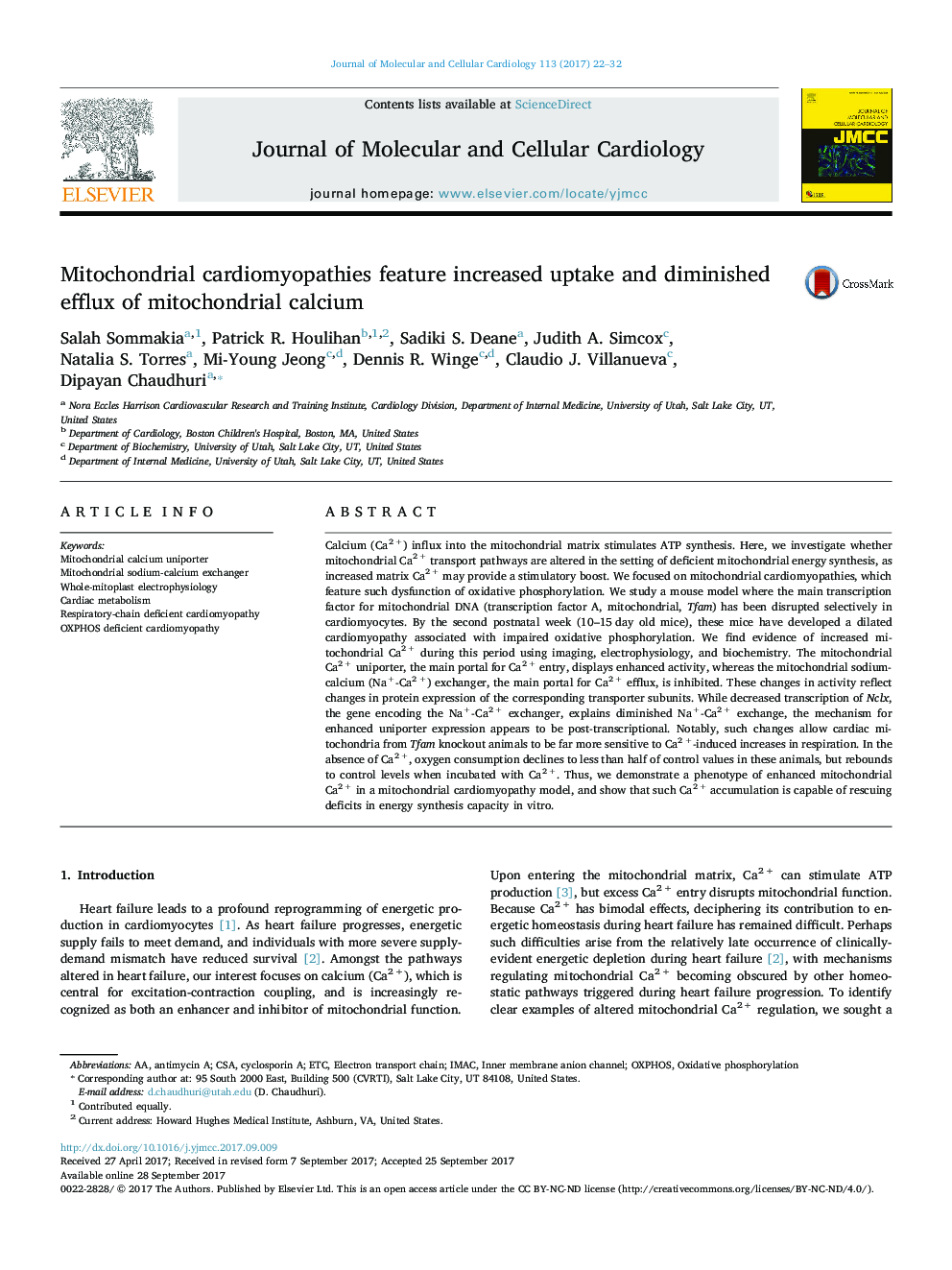| Article ID | Journal | Published Year | Pages | File Type |
|---|---|---|---|---|
| 5533405 | Journal of Molecular and Cellular Cardiology | 2017 | 11 Pages |
â¢KO of mitochondrial transcription factor Tfam models mitochondrial cardiomyopathy.â¢Cardiac mitochondria from Tfam KO mice take up Ca2 + at twice the rate as controls.â¢Cardiac mitochondria from Tfam KO mice release Ca2 + at half the rate as controls.â¢These changes reflect increased MCU complexes and decreased NCLX protein.â¢Mitochondrial Ca2 + maintains respiratory rates despite compromised OXPHOS.
Calcium (Ca2Â +) influx into the mitochondrial matrix stimulates ATP synthesis. Here, we investigate whether mitochondrial Ca2Â + transport pathways are altered in the setting of deficient mitochondrial energy synthesis, as increased matrix Ca2Â + may provide a stimulatory boost. We focused on mitochondrial cardiomyopathies, which feature such dysfunction of oxidative phosphorylation. We study a mouse model where the main transcription factor for mitochondrial DNA (transcription factor A, mitochondrial, Tfam) has been disrupted selectively in cardiomyocytes. By the second postnatal week (10-15Â day old mice), these mice have developed a dilated cardiomyopathy associated with impaired oxidative phosphorylation. We find evidence of increased mitochondrial Ca2Â + during this period using imaging, electrophysiology, and biochemistry. The mitochondrial Ca2Â + uniporter, the main portal for Ca2Â + entry, displays enhanced activity, whereas the mitochondrial sodium-calcium (Na+-Ca2Â +) exchanger, the main portal for Ca2Â + efflux, is inhibited. These changes in activity reflect changes in protein expression of the corresponding transporter subunits. While decreased transcription of Nclx, the gene encoding the Na+-Ca2Â + exchanger, explains diminished Na+-Ca2Â + exchange, the mechanism for enhanced uniporter expression appears to be post-transcriptional. Notably, such changes allow cardiac mitochondria from Tfam knockout animals to be far more sensitive to Ca2Â +-induced increases in respiration. In the absence of Ca2Â +, oxygen consumption declines to less than half of control values in these animals, but rebounds to control levels when incubated with Ca2Â +. Thus, we demonstrate a phenotype of enhanced mitochondrial Ca2Â + in a mitochondrial cardiomyopathy model, and show that such Ca2Â + accumulation is capable of rescuing deficits in energy synthesis capacity in vitro.
Graphical abstractDownload high-res image (266KB)Download full-size image
